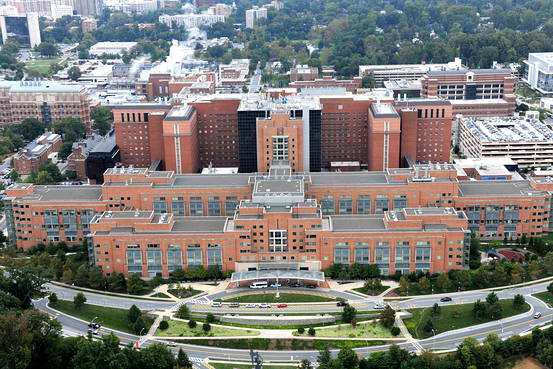Is the time we experience in our day-to-day lives real? Here, theoretical physicist Brian Green explores the potential particles of time and why we could, in theory, travel forward in time but not back.
Researchers have identified a drug that can regenerate teeth from the inside out, possibly reducing the need for artificial fillings.
The drug was previously used in Alzheimer’s clinical trials, and it now appears to improve the tooth’s natural ability to heal itself. It works by activating stem cells inside the tooth’s pulp centre, prompting the damaged area to regenerate the hard dentin material that makes up the majority of a tooth.
“The simplicity of our approach makes it ideal as a clinical dental product for the natural treatment of large cavities, by providing both pulp protection and restoring dentine,” said lead author Paul Sharpe from King’s College London.
In late 2015, iPhone and PlayStation 3 hacker George Hotz teased a project that sounded like a dream: his new company would produce a $1,000 consumer product that could grant your car semi-autonomous capabilities. Eleven months and one terse letter from the National Highway Traffic Safety Administration later, Hotz killed the project.
About a month after that, Hotz resurrected it as a two open-source efforts, splitting the hardware and software of the self-driving tech he had created with the rest of his company, Comma.ai. Hotz always talked like he wanted to start a DIY car revolution to take on the car industry (and Elon Musk especially). Open sourcing the plans only increased the chances of it happening.
More data for caloric restriction and health benefits.
The long-term response to calorie restriction has long been of interest to the aging research community, and particularly in the past few decades as the tools of biotechnology allowed for a more detailed analysis of the metabolic changes that accompany a reduced calorie intake. A restricted diet extends healthy life spans in near all species tested to date, though to a much greater extent in short-lived species than in long-lived species such as our own. Considerable effort is presently devoted to the development of drugs that can replicate some fraction of calorie restriction — more effort than is merited in my opinion, given that the optimal result for extension of human life span achieved via calorie restriction mimetics will be both hard to achieve safely and very limited in comparison to the gains possible through rejuvenation therapies after the SENS model. Repairing damage within the existing system should be expected to outdo attempts to change the system in order to slow the accumulation of damage, in both efficiency and size of result.
Not everyone is interested in the long term, however. The short term health benefits of calorie restriction appear quickly and are surprisingly similar in mice and humans, given that calorie restriction in mice results in significantly extended life and calorie restriction in humans does not. The beneficial adjustments to metabolism and organ function are for the most part larger and more reliable than similar gains presently achievable through forms of medicine. That is more a case of medical science having a long way to go yet than calorie restriction being wondrous, however. Still, the short term benefits are coming to the attention to wider audience within the research and medical community.
Grassroots funding of fundamental science and private enterprize will lead the way in rejuvenation biotechnology not the traditional funding sources from Government which are shrinking every year.
It is important to understand that innovation and progress is unlikely to come from the Government and the traditional grant system which is shrinking every year. Rejuvenation biotechnology will likely be funded with a mix of fundraising for fundamental breakthrough technologies followed by private enterprize taking discoveries to market. This is why supporting science is critcial as relying on the Government to innovate and drive progress is unlikely to yield results anytime soon.
“Today, researchers compete for government grants at increasingly shorter intervals and with diminishing chances of success: Less than 1 in 5 grant applications succeeds. This inhibits risk taking.
By contrast, private investment in medicine has kept pace with the aging population and is the principal engine for advancement. More than 80% of new drug approvals originate from work solely performed in private companies. Note that such drug approvals come on average 16 years after the beginning of clinical trials, which typically cost $2.5 billion from start to finish. Even if grant-subsidized academics wanted to create a new drug, economic reality prevents it.”
CRISPR can help us end many diseases and guide evolution and is probably one of the most powerful tools we have recently added to our toolkit.
Imagine you could edit a mouse’s genes to be resistant to Lyme Disease. The mouse would breed and evolution would take its course, leading to the extinction of the disease. That’s the vision for scientists developing CRISPR, technology that allows scientists to rewrite the code of life. William Brangham talks to Michael Specter who wrote about CRISPR for The New Yorker.
What happens when you have Deep Learning begin to generate your designs? The commons misconception would be that a machine’s design would look ‘mechanical’ or ‘logical’. However, what we seem to be finding is that they look very organic, in fact they look organic or like an alien biology. Take a look at some of these fascinating designs.
The photo above design is described as follows:
“This is not only an exciting development for the construction sector, but many other industries as well. In the case of this particular piece, the height is approximately half that of one designed for traditional production methods, while the direct weight reduction per node is 75%. On a construction project that means we could be looking at an overall weight reduction of the total structure of more than 40%. But the really exciting part is that this technique can potentially be applied to any industry that uses complex, high quality, metal products.”
One of the most powerful observing instruments on Earth, the Very Large Telescope, will join the search for potentially habitable planets around the Alpha Centauri star system.
The survey will take place in 2019 under the terms of an agreement signed by the European Southern Observatory, which operates the VLT in Chile, and by the Breakthrough Initiatives.









